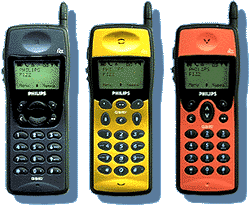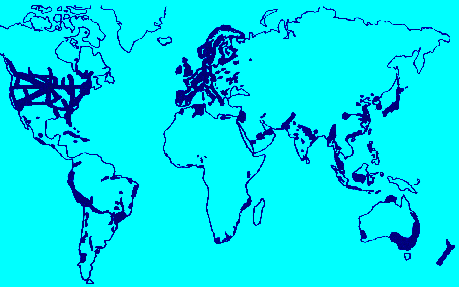
 |
JPL's Wireless Communication Reference WebsiteChapter: Cellular Telephone Networks |
Particularly in the United States, the term "cell phone" is often used by the public when a wireless phone is meant. The cellular approach was proposed and developed predominantly by the Bell System, in the U.S. in the early 70's, after the regulatory agency FCC has asked for an upgrade of the existing radio telephone service. The FCC had the foresight to require:
 Start page of video from Short Course by BMRC Video from Wireless Communications Networks Short Course
|  Embedded QuickTime Video | |

| Examples of systems using cellular frequency reuse are GSM and AMPS. |
 Coverage of cellular telephone systems by the year 2000.
| There was an estimated 13,000,000 users of cellular phones in the U.S. alone in 1995, and marketeers expected that the cellular market growed by more than 25% per year for the next five years. Worldwide sales of mobile phones was around 500 Million in 2003 and is expected to reach 1 Billion around 2012. |